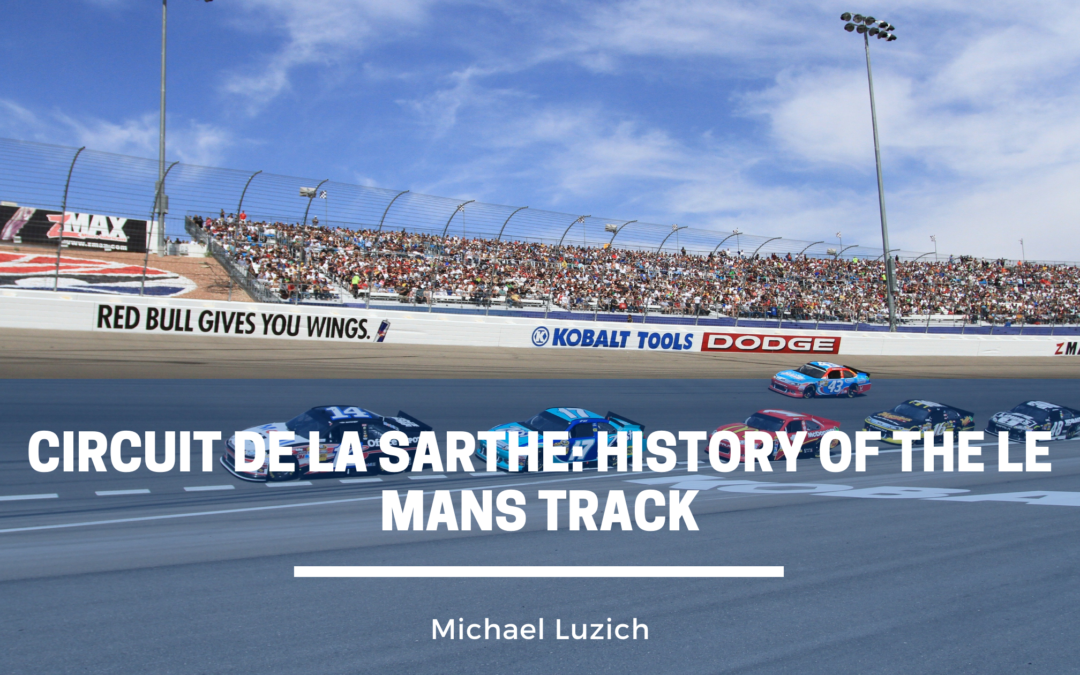The 24 Hours of Le Mans is the world’s oldest production-car endurance race, held annually at the Circuit des 24 Heures du Mans (also known as Circuit de la Sarthe) in Le Mans, France. The Circuit dates back to the 1920s. Since 1923, the race has been interrupted only by the Great Depression and the Second World War.
Drivers began racing in Le Mans almost as soon as there were cars to race. As early as 1906, the Automobile Club de l’Ouest (ACO) organized races; they laid the modern course in 1921 with drivers racing a circuit of 10.7 miles between the towns of Pontlieu, Mulsanne, and Arnage.
In 1922, Rudge-Whitworth, a British manufacturer of sportscar wheels, made a generous donation to the ACO to develop an attention-getting racing event. The ACO responded with an endurance challenge for production cars: the prize would go to the driver or team who made the greatest distance around the Le Mans circuit in 24 hours. The first race, on May 25–26, 1923, was won by André Lagache and René Léonard in a Chenard-Walcker.
In the early years, the entire course was unpaved, but by 1927 the leg from Pontlieue to Mulsanne was paved with asphalt and car parks were added for spectators. In 1929 a bypass was added from the Rue du Circuit to the Route Nationale to avoid the suburbs of Pontlieu. That lasted only until 1932, when safety concerns led the ACO to buy land for the Dunlop Curve and the Esses, avoiding the original bypass.
The global Depression brought widespread labor strikes in France, with the 1936 Le Mans race cancelled due to these strikes. Racing resumed briefly in 1937, but the German invasion and World War II led to a 10-year hiatus from 1939 to 1948. Luckily, the war left the roads of the Circuit largely intact. However, the pits, grandstands, and other facilities had to be completely rebuilt before the race could restart in 1949.
In 1955, a tragedy led to a substantial reworking of the track and spectator stands. That year, driver Mike Hawthorn pulled his Jaguar to the right for a pit stop, passing in front of Lance Macklin’s Austin-Healey. As Hawthorn braked for the pits, Macklin swerved out from behind him and directly into the path of Pierre Levegh’s Mercedes-Benz 300 SLR. Levegh slammed into Macklin’s car from the rear at more than 125 mph, launching his Mercedes completely over both Macklin and an earthen berm into the spectator area near the grandstands. Levegh’s car disintegrated on impact, killing him and 83 spectators, with more than 180 more injured.
To this day, that tragedy remains the most devastating accident in the history of the sport. Mercedes withdrew entirely from sportscar racing (until 1987). When the next race ran in 1956, race organizers had modified the track to move the pits farther back, redesigned the pit straight, and enhanced protection in the spectator enclosures.
Auto speeds on the Circuit increased dramatically throughout the 1960s. With the 1955 disaster still fresh in memory, drivers and observers of the sport voiced growing concerns about whether the course was safe for modern vehicles. Many of the modifications over the years that followed were added to force drivers to take the Circuit more slowly. These included the Ford Chicane at the final corner (1968), the chicane at Dunlop Corner (1987), and the chicanes to break up the famous Mulsanne Straight (1990). In 2006, the Dunlop Corner was again tightened to force drivers to reduce their speed.
1965 saw the addition of the Bugatti Circuit, a track within the track that has become popular for motorcycle events.
The 1970s and 1980s saw a series of changes, replacing public roads and accommodating new roads being built in the area. In 1971, the ACO began to eliminate sections of public road from the Circuit and added the Porsche Curves between Arnage and the Ford Chicane. Tertre Rouge was tightened in 1979 in response to a new ring road around that town; in 1986, Mulsanne Corner was redesigned to avoid a new traffic roundabout.
Today the Le Mans track is on CIRCUIT №15. Despite all the changes to the route, the Circuit de la Sarthe remains one of the iconic raceways of the world: an enduring symbol of international motorsports.
